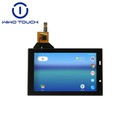What is the AOI?
AOI (Automated Optical Inspection) recognition systems are increasingly popular and getting more and more attention in the industry. This is due to its ability to detect a variety of defects and flaws with a high degree of accuracy. For instance, AOI systems are used across sectors in PCB (printed circuit board) assembly, semiconductor wafer fabrication, medical device manufacturing and other related industries.
At the most basic level, AOI systems use various digital imaging technologies to capture an image of the inspected object and then analyse it under a set of set algorithms in order to detect defects. AOI systems use three main imaging technologies: laser, light and vibration-based technologies. Laser technology uses a light beam which scans the inspected item and then creates a 3D model of the item in order to analyse. Light technology utilises strong and focused light which underpins a specific lighting solution tuned to the inspected item in order to detect the desired defect pattern. Vibration-based technology uses a special probe which vibrates the inspected object and detect any imperfections by measuring surface roughness or resonat frequencies.
The next step in the automated optical inspection process is to detect defects and flaws. This is done by comparing the captured image with a predefined standard. This is relatively simple with static objects, where the AOI system simply compares the actual object against the standard set of values. However, things become slightly more tricky if the item of inspection is a moving one. In such cases, the AOI system has to continually compare the image of the object with the standard in order to detect any changes.
When it comes to recognition, the AOI system utilises a combination of both digital imaging technologies and special algorithms. These algorithms analyse the captured images and then detect any patterns or differences which constitute a deviation from the predefined standard. They are able to detect exact shapes and sizes as well as various materials and textiles. As such, AOI systems are capable of detecting a huge range of defects, ranging from simple yet crucial cracks to more complex, structural problems.
Finally, AOI systems are also capable of making decisions based on the data they have collected and analysed. This is done by setting certain thresholds and levels of acceptability which the AOI system then compares against. If a defect is detected which is beyond the set levels of acceptability, then the AOI system can take certain measures to rectify the issue. This may involve either setting a specific flag for the user to identify and rectify the flaw or rejecting the item altogether so that it does not enter the production chain.
Overall, AOI recognition systems are being increasingly adopted in the industry as they are capable of providing very accurate data and automating much of the process. They also enable operators to conduct more efficient inspections and make better-informed decisions while retaining a high degree of accuracy. They can detect defect patterns and materials, as well as compare objects with predefined standards and then make reliable decisions accordingly. As such, AOI recognition systems are set to remain an important part of industrial processes across the world.
Application of capacitive touch screen in AOI
AOI(Automatic Optical Detection) recognition systems have traditionally been used to detect complex manufactured products to ensure quality control. But as technology has advanced, the ability to use capacitive touch screens in AOI recognition systems has allowed for greater accuracy and faster processing.
When integrated into AOI recognition systems, capacitive touch screens are often used in conjunction with other software and hardware components, such as cameras and optical sensors, to help identify products. By combining these components, the AOI identification system is able to quickly detect any defects in the product and alert users to potential problems. This helps ensure that products meet stringent quality assurance standards and ultimately improves customer satisfaction.
Capacitive touch screens can also be used to control the automated process of AOI recognition systems. For example, capacitive touch screens can be used to detect the presence or absence of objects and, when used in conjunction with a robotic arm, control their position and orientation. By combining capacitor technology with automation, AOI recognition systems can run faster, resulting in faster production times and fewer errors.
In short, the application of capacitive touch screen in AOI recognition system brings many advantages. From improved accuracy to faster processing speed, capacitor technology makes it easier than ever to fix problems. The repetitive aspects of automated processes help increase productivity and provide higher quality results for customers. Ultimately, capacitive touch screens could help optimize optical inspection processes and revolutionize the way products are manufactured and tested.
Email: sales08@wiwotouch.com
Our team will reply you as soon as possible
call us with any questions
Have a nice day
Thankyou for your time




